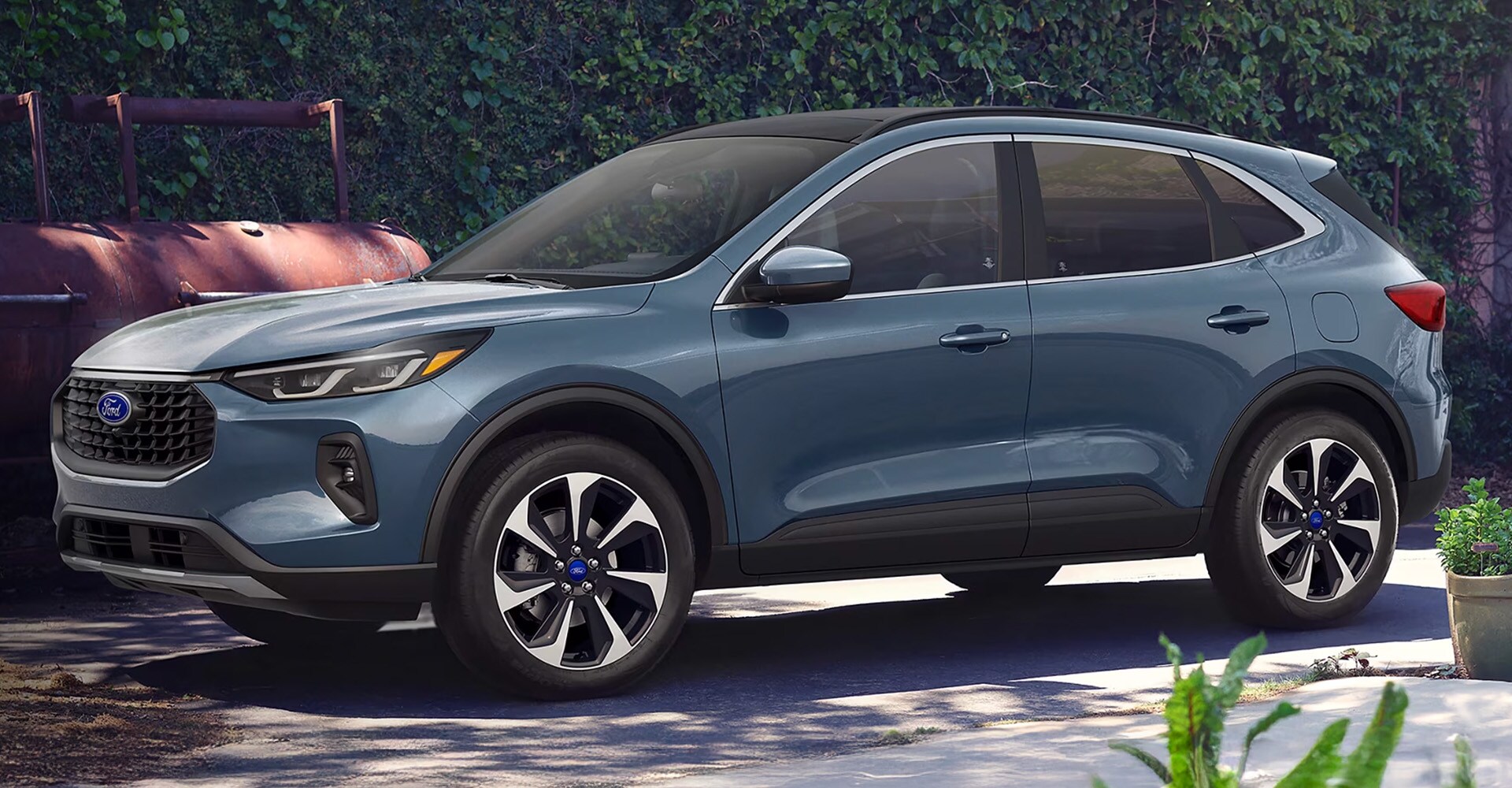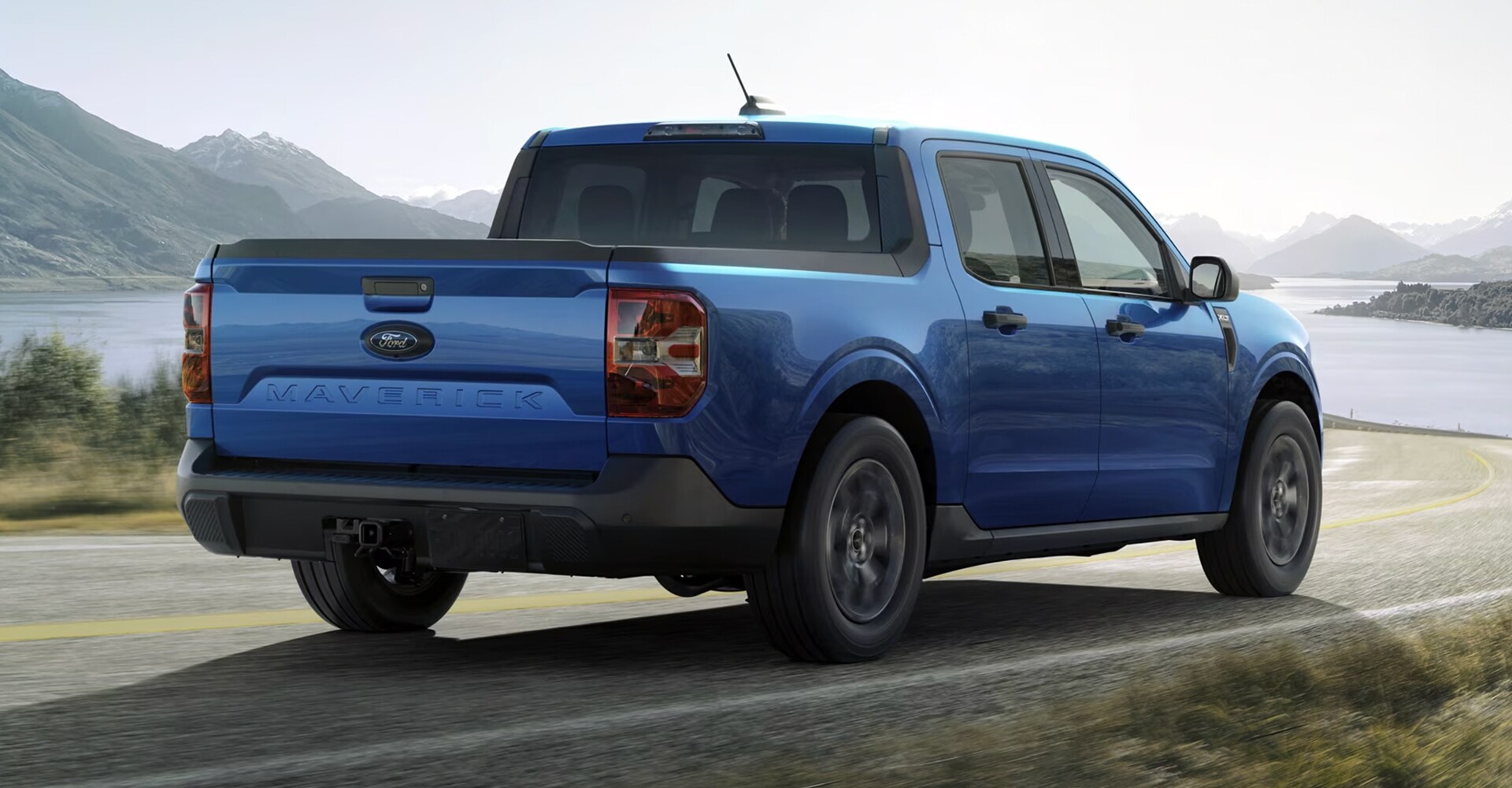
Ford Fuel Efficiency Guide: How A Ford Can Save You Fuel
Save Money on Gas
Looking to cut fuel costs with a Ford vehicle? This article from Hoffman Ford reveals the most fuel-efficient Ford models, including the impressive Ford fuel-efficient cars, and their standout features. Explore options like the Ford Escape and F-150 hybrid and see how Ford's technology leads to better fuel economy.
Here's what you can expect to see in this article:
- Ford's EcoBoost® engines combine power with fuel efficiency, offering better MPG without sacrificing performance.
- The Auto Start-Stop technology saves fuel in stop-and-go traffic by shutting off the engine at stops, improving overall fuel economy.
- Eco Mode in Ford vehicles provides real-time feedback to encourage efficient driving habits, leading to long-term fuel savings.
How Ford's EcoBoost® Engines Are Redefining Fuel Efficiency
Ford's EcoBoost® engines are game changers in the world of fuel-efficient vehicles. These engines achieve the power of a larger V8 engine with significantly less fuel by integrating turbocharging, direct fuel injection, and variable camshaft timing. Drivers can enjoy a robust driving experience without compromising on fuel economy.
The benefits of the EcoBoost® engines are clear: they provide exceptional performance with better MPG, particularly on highways and under light loads. This not only translates to fewer fuel stops but also supports eco-conscious driving by reducing emissions. This dual benefit is ideal for those requiring both power and efficiency.
In total, there are seven different varieties of EcoBoost engines used in a variety of Ford models, ranging from 1.5-liter to 3.5-liter. The complete list of the EcoBoost engine lineup is as follows:
- Ford 1.5L EcoBoost engine: This is a 1.5-liter turbocharged three-cylinder engine that delivers 181 horsepower and 190 lb-ft of torque. You'll find this version in various Bronco Sport and Escape trim levels.
- Ford 2.0L EcoBoost engine: This 2.0-liter turbocharged four-cylinder engine provides up to 250 horsepower and 280 lb-ft of torque. You'll find it in the newer Maverick, EcoSport, Edge, Escape, and Bronco Sport models.
- Ford 2.3L EcoBoost engine: This is a 2.3-liter turbocharged four-cylinder engine that produces up to 310 horsepower and 350 lb-ft of torque. You can find it in the Bronco, the Mustang EcoBoost, the Ranger, and a few of the Explorer trim levels.
- Ford 2.7L EcoBoost engine: This 2.7-liter twin-turbocharged V-6 engine creates up to 335 horsepower and 410 lb-ft of torque and features in the Edge ST and a few versions of the Bronco SUV and F-150 trucks.
- Ford 3.0L EcoBoost engine: This 3.0-liter twin-turbocharged V-6 engine provides up to 418 horsepower and 440 lb-ft of torque. Ford uses it in the Explorer ST and the yet-to-be-released Bronco Raptor.
- Ford 3.5L EcoBoost engine: The most powerful of the EcoBoost lineup, this 3.5-liter twin-turbo V-6 engine makes up to 450 horsepower and 510 lb-ft of torque, depending on its variant. It's in the Expedition and Expedition Timberline, as well as a few of the F-150's trim levels.
Ford's vehicle lineup features a variety of models equipped with EcoBoost® engines, including the versatile Ford Explorer, the rugged Ford F-150, and the iconic Ford Mustang. These vehicles cater to a wide range of driving needs, proving that you don't have to choose between a powerful drive and a fuel-efficient vehicle.
Ford's EcoBoost® technology signifies a major advancement in automotive engineering, offering a practical solution for today's driving demands. These engines maximize fuel efficiency, making every mile count.

How Ford's Start-Stop Technology Saves Fuel
Imagine you're stuck in stop-and-go traffic, watching the fuel gauge dip lower with every idle moment. Ford's Auto Start-Stop technology is designed to tackle this exact scenario. The system saves fuel and reduces emissions by shutting off the engine at complete stops and restarting it when the brake is released.
This technology is especially effective in urban environments where stop-and-go traffic is common. Depending on driving habits and conditions, drivers can see fuel savings of 5-10% per gallon of gasoline around. While it might seem minimal initially, over time, it results in significant savings in a way that enhances overall fuel efficiency by taking advantage of optimal driving conditions and energy. Many drivers think about how these improvements can impact their overall experience.
The Auto Start-Stop system operates unobtrusively, ensuring it doesn't affect performance, comfort, or capability, thereby maintaining a smooth driving experience. Plus, for those times when you don't want to use it, the system can be easily disabled or may deactivate automatically in certain conditions like extreme temperatures or low battery levels.
Models like the Ford F-150 and Ford Ranger come equipped with this ingenious system, which makes them even more appealing for those looking to save on fuel costs without still sacrificing performance.
Save Fuel With Ford's Eco Mode
Ford's Eco Mode is like having a personal driving coach built into your vehicle. This system monitors your driving habits in real time and provides feedback to help you drive more efficiently to improve fuel economy and reduce environmental impact. It analyzes factors such as:
- Engine output
- Optimized gear shifting
- Acceleration
- Braking
- Speed
To score your performance and encourage smarter driving choices.
Activating Eco Mode is straightforward-simply access the drive mode selector and choosing Eco mode. Once engaged, the system will begin monitoring these driving habits and will provide feedback and adjusts performance settings to prioritize fuel savings. This is particularly beneficial during city driving, highway cruising, light towing, and daily commutes.
Eco Mode can be found in a variety of Ford models, such as the Ford F-150, Ford F-250, and Ford Transit. This feature helps reduce fuel costs without compromising your driving experience. It's a small change that can lead to big savings over time.

How To Get Better Gas Mileage In A Truck
Trucks are known for their power and utility, but they don't have to be gas guzzlers. Adopting a few smart strategies can significantly improve your truck's gas mileage. One of the most effective tools at your disposal is Ford's Eco Mode, which offers real-time feedback on your driving habits and optimizes engine settings for better fuel efficiency.
Smooth driving is another key to saving fuel. Consider the following tips:
- Avoid rapid acceleration and hard braking.
- Maintain a consistent speed and drive at a moderate speed.
- Use cruise control on highways to reduce air resistance and improve MPGs.
- Minimize stop-and-go traffic through route planning, which can make a big difference.
- Avoid Excessive Idling
Routine maintenance is essential. Regular oil changes, proper tire pressure levels, air filter cleaning or replacement, tune-ups, and wheel alignments can all improve fuel economy. So It is important to stay on top of these tasks. And don't forget to lighten your load-removing unnecessary cargo weight and avoiding roof racks or bike racks can reduce weight and wind resistance.
For those looking to upgrade, consider fuel-efficient models like:
- Ford Maverick hybrid
- Ford F-150 hybrid
- Ford Escape
- Ford Escape hybrid or Plug-in hybrid
- Ford Bronco Sport
- Fully Electric Ford F-150 Lightning
These Ford vehicles offer long-term savings and a more eco-friendly new drive.
How Does Tire Pressure Affect Gas Mileage?
Proper tire pressure is crucial. Underinflated tires increase rolling resistance, causing the engine to work harder and reducing MPG by up to 3%. Correct tire pressure can significantly improve fuel efficiency.
The best tire pressure for gas mileage is the manufacturer-recommended PSI found in your vehicle's manual or on the door jamb sticker. Overinflating tires, however, can harm safety and traction, so it's crucial to keep the pressure just right.
Ford vehicles come equipped with a Tire Pressure Monitoring System (TPMS) and can integrate with the FordPass® app, making it easier than ever to monitor and maintain proper tire pressure. Regularly checking tire pressure, especially before long trips or during seasonal changes, ensures optimal fuel economy and extends tire life.
For expert tire maintenance, consider visiting a Ford Service Center near me, like Hoffman Ford's. Proper tire care not only saves fuel but also enhances safety and reduces overall driving costs.

Drive Smarter, Save Fuel: Techniques for Fuel Efficiency
Driving smarter is one of the simplest ways to save fuel. Here are some tips:
- Avoid rapid acceleration and hard braking.
- Accelerate gently and anticipate traffic to maintain smooth driving.
- Maintain steady speeds, particularly using cruise control on highways, to reduce air resistance and improve MPG.
Limit idling whenever possible. If you're stopped for more than a minute, turn off the engine to avoid wasting fuel. Reducing unnecessary weight lightens the load, decreasing engine effort and fuel consumption.
Efficient trip and route planning could minimize unnecessary driving and fuel use. Combine errands and choose efficient routes to save time and gas. Adjust your driving habits for different seasons-limit engine warm-up time in winter and reduce A/C use in summer to maintain better fuel economy while you travel. You need to consider these factors for optimal efficiency.
Features like real-time fuel economy monitoring and driving assists in Ford vehicles can make a significant difference. For long-term savings, consider upgrading to hybrid or electric Ford models like the Ford Escape hybrid and the Ford Mustang Mach-E.
Enjoy Fuel Efficiency
In a world where every drop of fuel counts, Ford's innovative technologies and smart driving tips can help you save money and reduce your carbon footprint. From the powerful yet efficient EcoBoost® engines to the clever Eco Mode and beyond, Ford offers a range of solutions to enhance your driving experience while keeping fuel costs down.
Embrace these technologies and driving habits to make every mile matter. By driving smarter and leveraging Ford's fuel-efficient features, you can enjoy a more sustainable and economical journey.
Frequently Asked Questions
How does the EcoBoost® engine work?
The EcoBoost® engine works by using turbocharging, direct fuel injection, and variable camshaft timing, giving you the power of a bigger engine while saving on fuel. It's a win-win for performance and efficiency!
What driving conditions benefit most from Auto Start-Stop technology?
Auto Start-Stop technology shines in busy urban areas where you're constantly stopping and starting, making it perfect for city driving. It saves fuel and cuts down on emissions, so it's great for the environment too!
How does Eco Mode help save fuel?
Eco Mode helps save fuel by adjusting your car's performance settings to promote efficient driving based on your habits, making it easier to go easy on the gas and save on fuel costs.
What maintenance practices improve fuel economy in trucks?
To boost your truck's fuel economy, just keep up with regular oil changes, check your tire pressure, clean the air filter, and make sure the wheels are aligned. It's a simple routine that makes a big difference!
Why is tire pressure important for fuel efficiency?
Keeping your tire pressure in check is key for better fuel efficiency since it cuts down rolling resistance. This can save you up to 3% on gas, so it's definitely worth keeping an eye on!
-
Hoffman Ford
5200 Jonestown Road
Harrisburg, PA 17112
- Sales: 717-910-6651
Loading Map...
